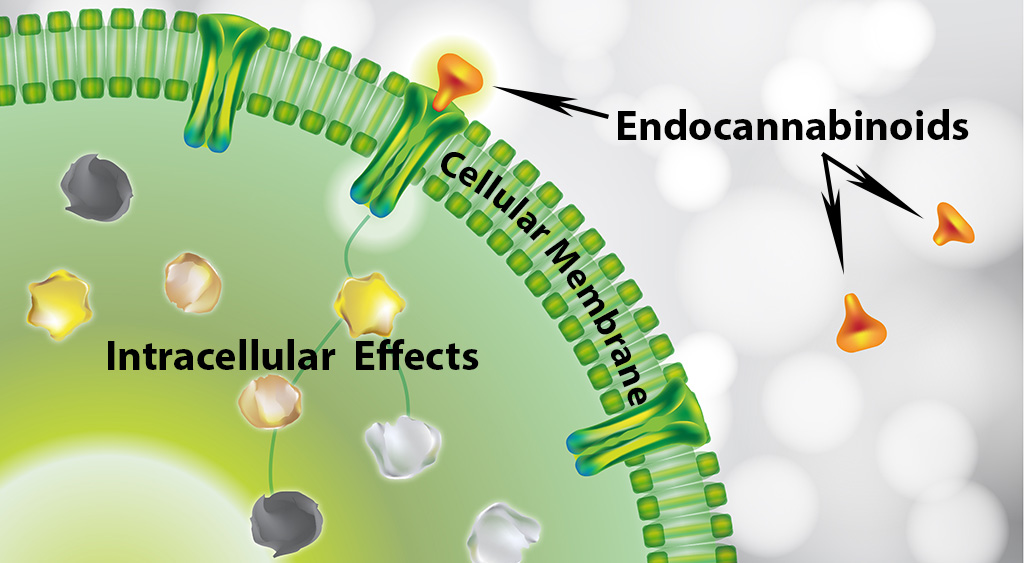
The prefix endo- is taken from the Greek éndon, meaning inner or within, and as such, the term endocannabinoid describes cannabinoids that are made by the human body.
Endocannabinoids are very similar to those cannabinoids made by the plant cannabis. As such, endocannabinoids mirror many of the effects the plant is famous for, albeit with less potent results. For example, THC is a cannabis constituent that can induce dose-dependent changes in cognition. In direct contrast, endocannabinoids are not strong enough to do the same. However, endocannabinoids are sufficient to cause mood changes; think “runner’s high.”
The two main and most studied endocannabinoids are anandamide (AEA) and 2-arachidonoylglycerol (2-AG).
Anandamide was the first endogenous cannabinoid discovered by R. Mechoulam and his team (1995), who named the compound by combining the Sanskrit word for bliss, “ananda,” and “amide,” which describes an organic chemical compound.
Mechoulam’s team and another team from Teikyo University, Japan, co-describe the discovery of the second endogenous cannabinoid named 2-arachidonoylglycerol (2-AG) in 1995.
The currently available scientific literature suggests that the classical endocannabinoids (i.e., AEA and 2-AG) are primarily made in two ways. One, by enzymes on an as-needed basis from phospholipid precursors in cellular membranes and tissues in response to a rise in intracellular calcium levels, and second by the presence of endocannabinoid tone. Both the enzymatic and tonal production of endocannabinoids appear dynamic and tissue specific.
One of the main enzymes responsible for the biosynthesis of AEA is NAPE-PLD (i.e., N-acetylphosphatidylethanolamine-hydrolysing phospholipase D).
Both are agonists at endocannabinoid receptor sites CB1 and CB2. However, AEA is a weak agonist at CB1 and CB2, while 2-AG is a very weak agonist at the same receptor sites.
AEA and 2-AG modulate TRPV1.
AEA and 2-AG are made from an omega-6 fatty acid, i.e., arachidonic acid (ARA).
Endocannabinoids and Their Clinical Relevance
Endocannabinoids play a significant role in endocannabinoid signaling and the complex web of associated effects, including maintaining cellular homeostasis in all organ systems.
Severe acute or chronic stressors can diminish endocannabinoid production, making the body and mind vulnerable to developing an abundance of physiological and psychiatric conditions.
CannaKeys has created access to nine endocannabinoids, endocannabinoid analogs, and their primary metabolizing enzymes that have potential clinical relevance. The number in parenthesis denotes the number of clinical trials associated with each cannabinoid.

